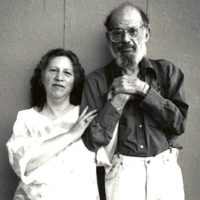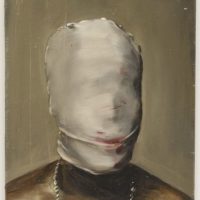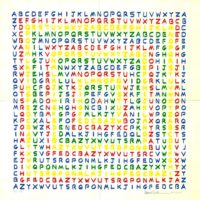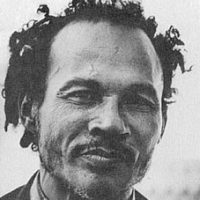Sometimes my tireless staff of thousands looks back and sees a blogpost that demands to be reposted. This one from Dec. 17, 2004 — 18 years ago next week, imagine that: “When 1984 came around smack in the middle of the rose-tinted Reagan era, many in the commentariat had a field day noting that George Orwell, for all his genius, had overstated his case. The future he’d warned of in ‘1984’ simply hadn’t come to pass.”
On Account of the Pandemic . . .
VACCINE: It’s not a matter / of knowing we will end— / though it’s no fun, / that is not the matter— / everything will end. / The matter is, / there’s no cure for that. / When death is deleted / by coding—digital, / genetical, biochemical— / whatever combination / it takes—something else / will provoke us. Freud / thought it perpetual.
GC CUNY at the Center of the Conversation
Biden Chronicler Evan Osnos on the 2020 Presidential Election
In his new book, “Joe Biden: The Life, the Run, and What Matters Now,” Evan Osnos draws on nearly a decade of reporting for The New Yorker. His portrait of Biden and what his election means for the nation. is based on lengthy interviews with Biden, as well as conversations with President Barack Obama, the Biden family, his advisers, rivals, and opponents.
Pandemic Poems From Cold Turkey Press: Mistress Death
This handmade, 16-page chapbook is not about Covid-19, but the virus is present in every line.
The Holy Grail of the Beat Generation
Neal Cassady: ‘The Joan Anderson Letter’
When Jack Kerouac read Neal Cassady’s spontaneous rush of words, he claimed it was more alive than any piece of writing he had ever seen. In its effusive style, its freewheeling candor, its Proustian (yes, Proustian!) introspection, the letter touched off a response in Kerouac that reshaped entirely his own approach to writing. The result was an explosion of “road” novels, beginning with “On the Road,” in which Cassady is renamed Dean Moriarity and seen as nothing less than “the root, the soul” of Beat legend.
His Birthday Was 79 Years Ago Today
Heathcote Williams was an unstoppable force. Even in death he is unstoppable. His writings, his activism, and his personal example continue to inspire others. At heart, Williams was a revolutionary. The historian Peter Whitfield placed his work in a “great tradition of visionary dissent” stretching from William Blake and John Ruskin to DH Lawrence and David Jones. I had the privilege of recording Williams’s final vinyl LP-cum-CD, “American Porn,” at his home in Oxford several years before he died. The poems he read — “Mr. President,” “The United States of Porn,” “Forbidden Fruit, or The Cybernetic Apple Core,” and “Snuff Films at the White House” — were in their uncompromising nakedness CT scans of history.
Thanks to Covid-19, We Know Her Better Than Before
“She’s a city-dwelling, / sagely bearded / mountain man, / a libidinous old dame / dressed in evening wear. / Her eyes are hooded . . . / Into this zone of mirth / our mistress of endings / sends the world spinning / out of orbit.”
GC CUNY at the Center of the Conversation
Peniel E. Joseph on MLK and MALCOLM X
with David Levering Lewis
“To most Americans, Malcolm X and Martin Luther King Jr. represent contrasting ideals: self-defense vs. nonviolence, black power vs. civil rights, the sword vs. the shield. Peniel E. Joseph’s dual biography of Malcolm X and Martin Luther King, ‘The Sword and the Shield,’ upends longstanding preconceptions to transform the understanding of the twentieth century’s most iconic African American leaders.” — GC Presents / The Center for Humanities
Kosti Does His Self-Publishing T-h-a-a-a-n-g . . .
Richard Kostelanetz shows us his M-A-N-Y books from Archae Editions. And he is stacked.
GC CUNY at the Center of the Conversation
The Science of Superheroes
FREE ONLINE EVENT: “The pop-culture universe of superheroes is filled with extraordinary humans and abilities. Captain America, the Hulk, and Black Panther seem to lie firmly in the realm of fantasy, but the technology behind them might not be as farfetched as we think. In his book ‘The Science of Marvel,’ Sebastian Alvarado shows that, using quantum physics, evolutionary biology, and mechanical engineering, we can find real-world parallels to superpowers such as ‘spidey sense’ and Thor’s lightning. He speaks with Shane Campbell-Staton, host of the podcast ‘The Biology of Superheroes,’ about where the science meets the fiction.” — GC Presents
‘Broken, Furious, and Infinitely Pathetic’
Mencken Could Have Written Trump’s Obituary
When William Jennings Bryan died, in 1925, H.L. Mencken wrote the most devastating obituary of an American politician you’ll ever read—and that includes Hunter S. Thompson’s farewell to Nixon. All you need to do is substitute “Trump” for “Bryan” to see how snug the fit will be when Trump takes his permanent leave.
A Fascinating Passage from a Fascinating Book
“It’s wasted breath to tell a scumbag: ‘It’s not nice to be such a swine. Why don’t you smarten up, get your act together?’ We fail to comprehend that the majority of scumbags are consciously scummy—they are aware of it and would not wish to be any different, as long as they’re able to conceal their scumminess.”
— NARCOTICS by Stanisław I. Witkiewicz
Diane di Prima, R.I.P.
Diane di Prima died several days ago in San Francisco at age 86. The obituaries have poured in, paying tribute to a life devoted to writing—her own and others’. She was a poet, editor, publisher, memoirist, novelist and, not least, a social activist. I believe she will be remembered most for her poetry. What I like is its simplicity. I understand it. I like its rich feeling, which is straightforward and strong and not at all sentimental. Her poems age well. I’d be surprised if her poetry didn’t last longer than the poetry of many of the Beats.
Lear Lite
Shakespeare’s writing—all of it, poetry and plays—was repulsive to Tolstoy, who claimed that whenever he read Shakespeare he was overcome by “repulsion, weariness, and bewilderment.” As for “King Lear,” ranked among Shakespeare’s four greatest tragedies, he found it “at every step,” according to George Orwell, “stupid, verbose, unnatural, unintelligible, bombastic, vulgar, tedious and full of incredible events, ‘wild ravings,’ ‘mirthless jokes,’ anachronisms, irrelevancies, obscenities, worn-out stage conventions and other faults both moral and aesthetic.”
When Emmett Williams Squared the Alphabet . . .
In 1956, his color scheme was as bright as day. In the plague year of 2020 a color inversion is like the night.
Bob Kaufman: ‘Tin Pan Alley’
“No one has ever written a song about Coronary Thrombosis, / Even though its blessings have been widely recognized . . . / Even though it has saved many people from a lifetime of sorrow . . . / Even though it has rescued many people from bottomless pits of Death . . . / Even though it has provided a good life for millions of doctors, nurses, / Ambulance drivers, morticians, stonecutters and countless others. / Yet, on ungrateful Tin Pan Alley / No one has ever written a song about Coronary Thrombosis.”
GC CUNY at the Center of the Conversation
CHANGE: How Artists Lead the Way
Wednesday, Oct. 21, 7:30 p.m. A FREE ONE EVENT Featuring Vijay Gupta, violinist, founder of Street Symphony, a MacArthur Award-winner, and popular TED speaker; Hồng-An Trương, an artist using photography, sound, video, and performance, whose work has been shown at venues including the International Center for Photography, The Kitchen, and the Museum of Modern Art; and Hank Willis Thomas, a conceptual artist whose work has been exhibited at the International Center of Photography; Guggenheim Museum Bilbao, Spain; and Hong Kong Arts Centre; and who collaborates on the artist-run initiatives for civic engagement For Freedoms and the Wide Awakes. This cross-disciplinary panel will be moderated by Sarah Lewis, associate professor at Harvard University; a leading commentator on race, contemporary art, and culture; and a much-viewed TED speaker.

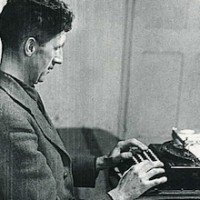
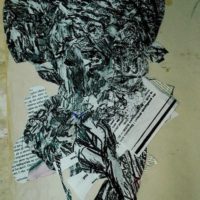


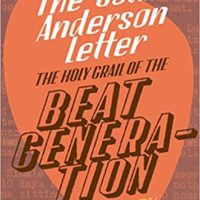
![Heathcote Williams [Photo: JH, 2013]](https://www.artsjournal.com/herman/wp/wp-content/uploads/2017/07/heathcote-williams-photo-copy-200x200.png)





